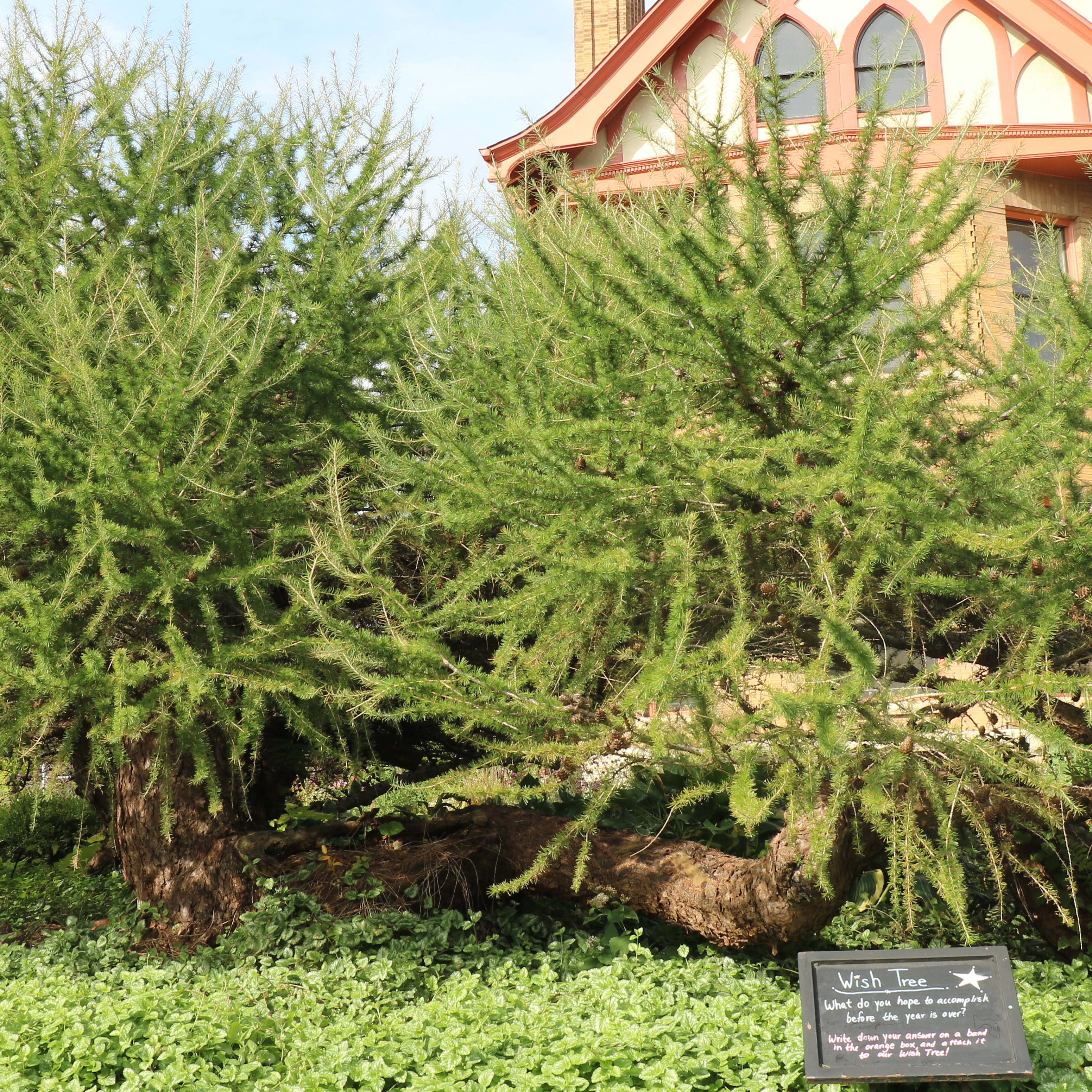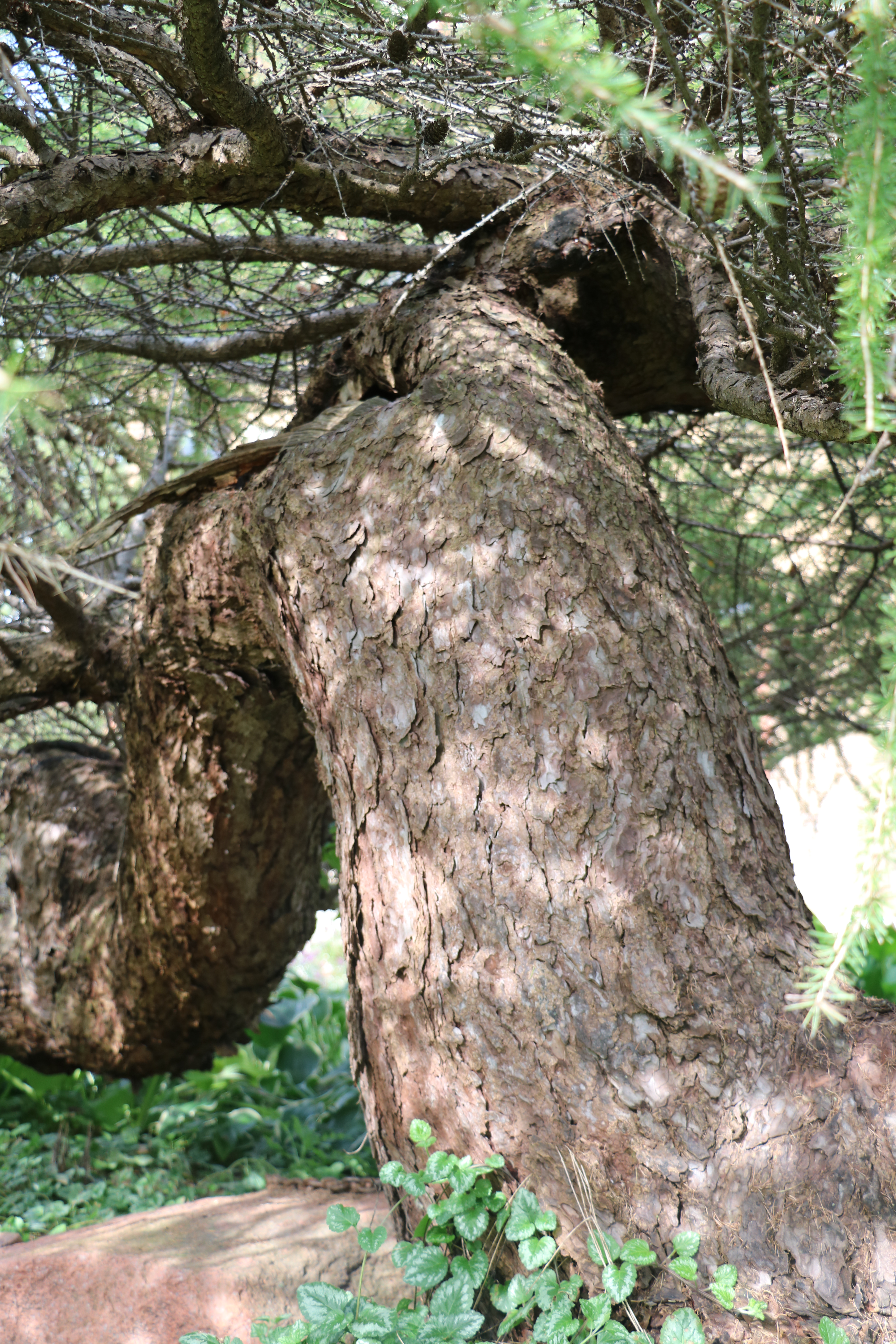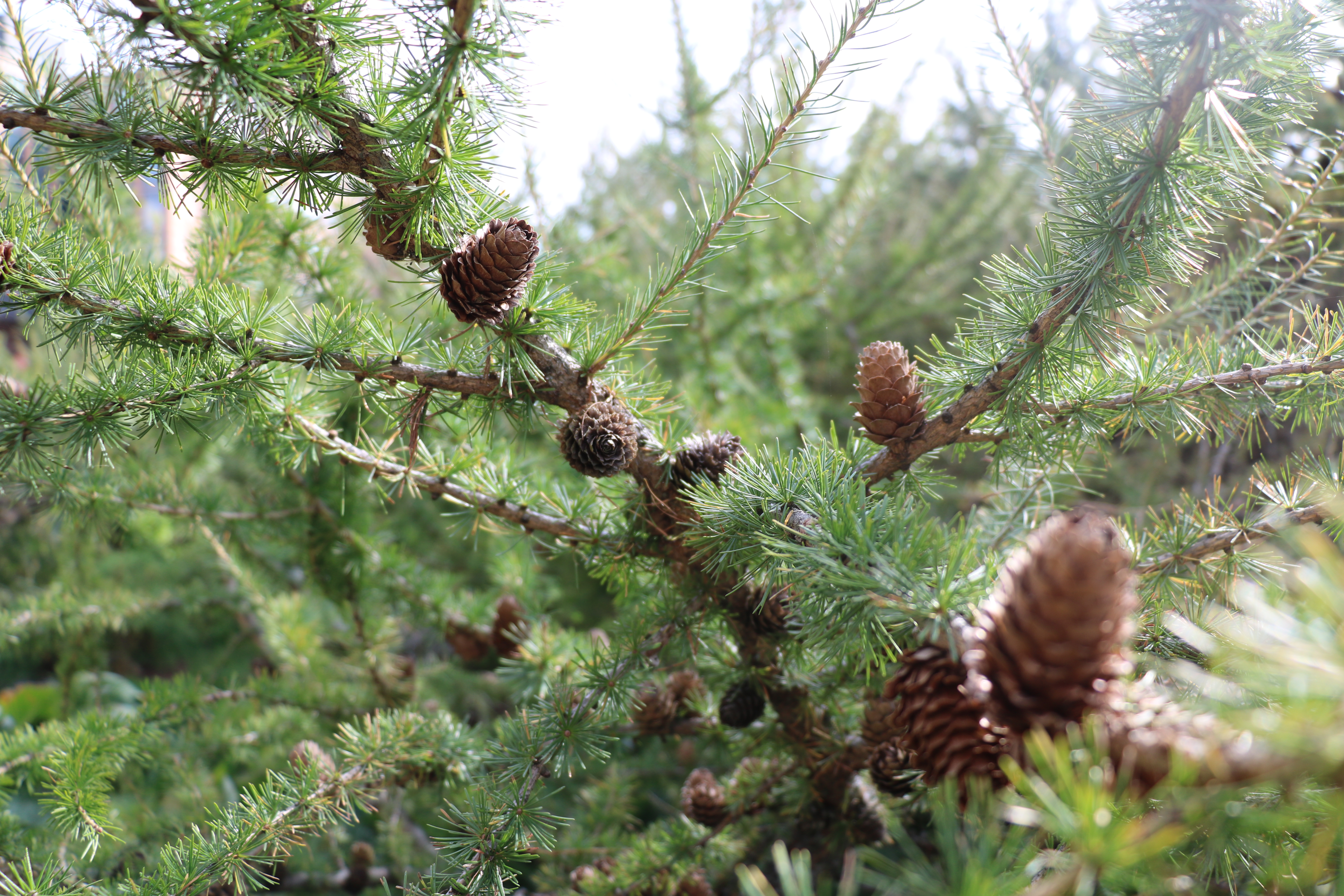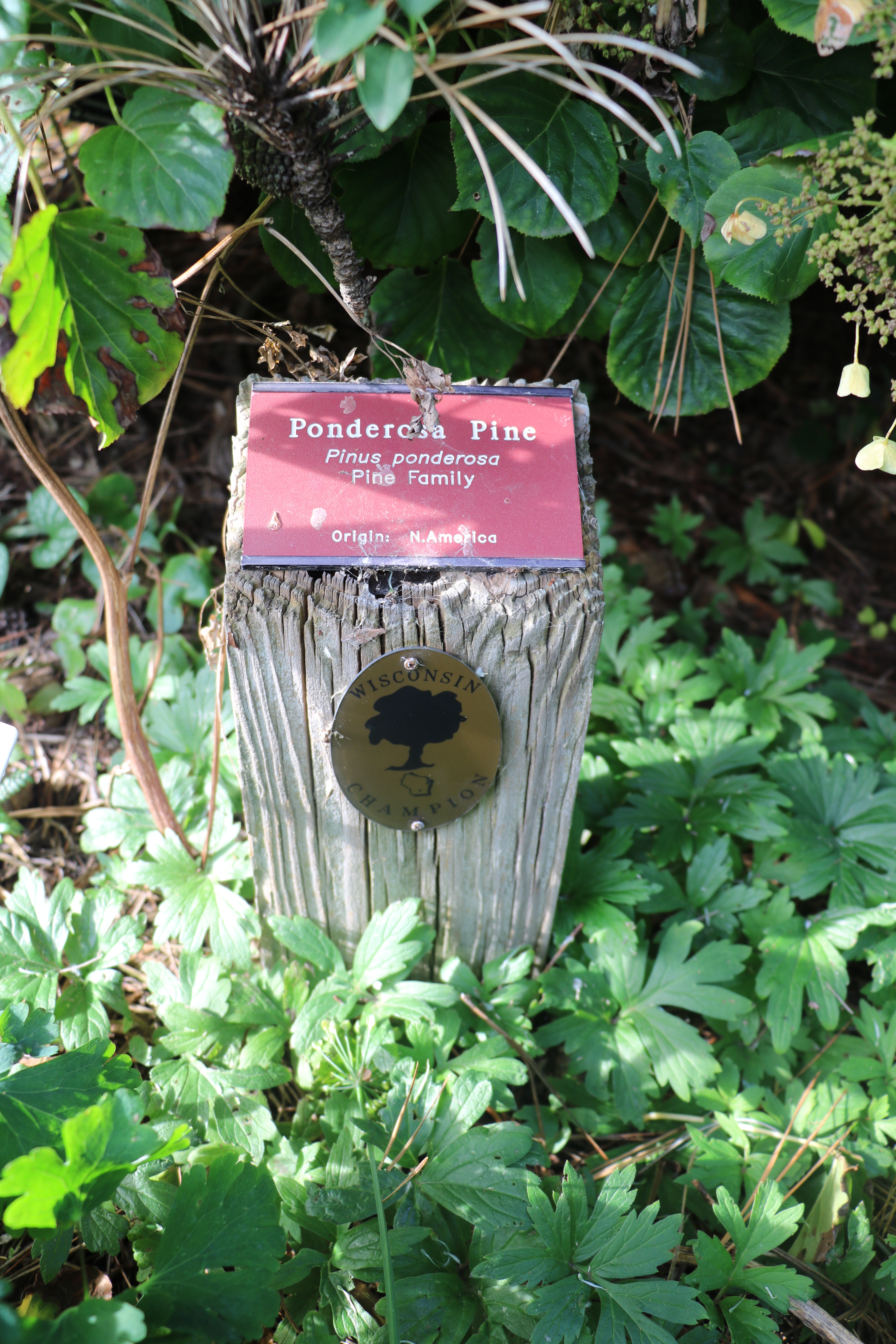Towering above, and wandering about the Allen Centennial Gardens are remarkable specimens of members of Pinaceae, or Pine Family. Many of these specimens, predate the existence of the gardens, which were built in the 80’s as a replacement for gardens that were once near the University of Wisconsin-Madison’s Horticulture department building, the Plant Sciences building.
Our first specimen, Larix decidua or European Larch tree, can be found on the south-west corner of the Queen Anne house, which used to house the dean of the College of Agriculture and Life Sciences. This peculiar tree is interesting in various ways. One of its most remarkable traits, as a species, is that it is a deciduous. This means that in the season of fall, when the temperatures cool and the hours of sunlight change, this tree’s needles turn yellow. If you have never seen a Larch, L. decidua, you could guess that it is deciduous by its latin specific epithet, ‘decidua’. Another interesting aspect of the tree is the specimen itself. This European Larch tree appears to be more a shrub than a tree. Its stature obscures its age, and its branches hide its twisting and winding trunk.



Our second specimen is Tsuga canadensis, or Canadian hemlock. This tree is located on the north side of the Queen Anne house near a shaded walkway. It is hidden from the rest of the gardens. An interesting aspect of this tree is its double trunk, which appears to be joined together underground at its roots. It is very tall, which is a testament to this tree’s age. This Tsuga canadensis predates the creation of the gardens. At the base of the tree, there is a wooden plaque which has basic botanical information. Only a select number of trees on campus have this special designation. They were place in the 1990’s and were part of a large campus tree walk brochure in 1997. Many have been destroyed over the years, but all Pinaceae trees in this blog post have their intact wooden plaques.




Our final Pinacea specimen is so grand that its plaque is adorned with a medallion, which designates it as a champion tree; one of the largest of its kind in the state. The mighty Pinus ponderosa, or Ponderosa Pine, stands in the corner of the gardens like a resting fighting man. The entirety of its lower trunk is wrapped by a suspicious vine, which masks the grandeur of this tree. It is not a native of Wisconsin, which might contribute to its designation as a champion tree. Regardless, it is a magnificent tree and it towers above the rest of the trees at the Allen Centennial Gardens.




松树
(Sōngshù)

